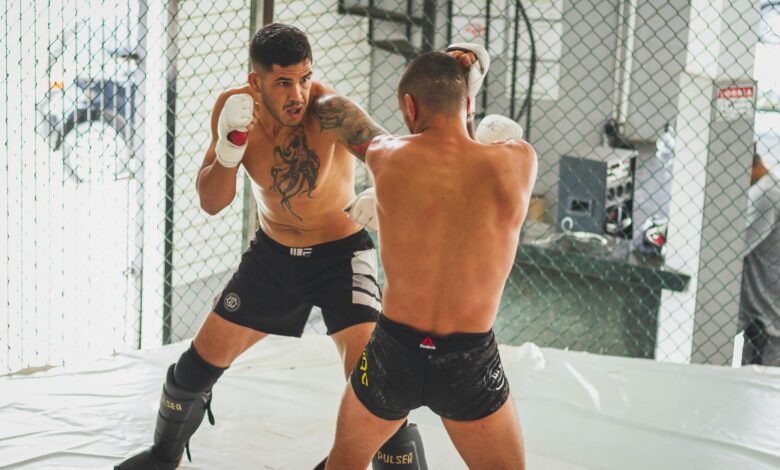The Rise of MMA Evolution Techniques and Global Impact

Introduction
Mixed Martial Arts (MMA) has emerged as one of the fastest-growing sports in the world, captivating audiences with its raw intensity, technical brilliance, and unpredictable outcomes. Combining elements from boxing, wrestling, Brazilian jiu-jitsu, Muay Thai, and other combat disciplines, MMA represents the ultimate test of a fighter’s versatility, endurance, and mental toughness. From its controversial early days as a no-holds-barred spectacle to its current status as a regulated mainstream sport, MMA has undergone a remarkable transformation, producing global superstars like Conor McGregor, Khabib Nurmagomedov, and Amanda Nunes. This article explores the evolution of MMA, its most effective fighting styles, the business behind its rapid growth, and its cultural impact worldwide. Whether you’re a longtime fan or new to the sport, this guide provides an in-depth look at what makes MMA uniquely compelling.
The Evolution of MMA: From Underground Fights to Global Phenomenon
The history of MMA traces back to ancient combat sports like Greek pankration, but its modern incarnation began in the 1990s with the creation of the Ultimate Fighting Championship (UFC). Early UFC events featured minimal rules, pitting specialists from different martial arts against each other to determine which style was most effective. These brutal contests drew criticism from politicians and athletic commissions, leading to near-banishment in the United States during the late 1990s. The sport’s salvation came through the implementation of standardized rules—weight classes, time limits, gloves, and banned techniques—that made it palatable to regulators and mainstream audiences. As the UFC gained traction in the 2000s through reality shows like The Ultimate Fighter and charismatic stars like Chuck Liddell and Randy Couture, MMA began its ascent to global prominence.
Essential MMA Techniques: Striking, Grappling, and Fight IQ
Success in MMA requires mastery of multiple combat disciplines and the ability to seamlessly transition between them during fights. Striking techniques borrowed from boxing and Muay Thai—jabs, crosses, elbows, and leg kicks—form the foundation of stand-up offense and defense. Wrestlers contribute takedown techniques like double-legs and single-legs, along with the positional control needed to dominate opponents on the ground. Brazilian jiu-jitsu specialists bring submission holds—rear-naked chokes, armbars, and triangles—that can end fights instantly. Modern fighters must also develop exceptional “fight IQ”—the ability to read opponents, manage energy, and adapt strategies mid-fight. Footwork, head movement, and cage awareness separate elite competitors from the pack.
The Business of MMA: How the Sport Makes Billions
MMA’s explosive growth has created a lucrative global industry with multiple revenue streams. The UFC leads the market with its pay-per-view model, where major events generate over a million buys at $70+ each, supplemented by ESPN broadcast rights worth $1.5 billion over five years. Fighter pay remains controversial, with champions earning millions per fight while preliminary card athletes may make as little as $12,000, sparking ongoing debates about revenue sharing. Sponsorships have evolved from early “condom depot” logos to partnerships with major brands like Venum, Monster Energy, and DraftKings. International expansion has opened new markets, particularly in Asia where ONE Championship has thrived with its unique ruleset and focus on martial arts values. MMA’s economic impact extends beyond promotions to gyms, apparel companies, media outlets, and gambling platforms.

Cultural Impact: How MMA Changed Combat Sports Forever
MMA’s rise has fundamentally altered the combat sports landscape, drawing fans away from traditional boxing and creating crossover stars who transcend athletics. The sport’s appeal lies in its authenticity—fights can end decisively by knockout or submission, avoiding boxing’s controversial judging decisions. MMA gyms have proliferated worldwide, making combat training accessible to casual enthusiasts alongside professionals. The sport has broken gender barriers, with female fighters like Ronda Rousey and Valentina Shevchenko achieving equal fame and pay to male counterparts in some cases. MMA’s influence appears in movies, video games, and even military training programs. Social media has allowed fighters to build personal brands outside competition, with Conor McGregor pioneering the model of self-promotion that has since been adopted across sports.
Frequently Asked Questions About MMA
1. How dangerous is MMA compared to other contact sports?
Studies show MMA has higher concussion rates than boxing but fewer chronic brain injuries because knockouts end fights immediately rather than repeated rounds of punishment. Overall injury rates are comparable to hockey or football when measured per athletic exposure.
2. Why do some MMA fighters struggle in boxing matches?
The sports require different skill sets—MMA fighters must defend against takedowns and kicks, leaving them vulnerable to pure boxers’ hand speed and footwork. Boxing’s longer rounds and bigger gloves also demand different conditioning.
3. How do fighters cut weight safely before weigh-ins?
Professional fighters work with nutritionists to gradually lose fat through dieting, then shed water weight (up to 20 pounds) in the final days before weigh-ins through dehydration techniques followed by careful rehydration. Improper weight cutting can be extremely dangerous.
4. What makes the UFC different from other MMA promotions?
The UFC has the deepest talent pool, highest production values, and strongest brand recognition. Other promotions like Bellator or ONE Championship often focus on regional markets or different rule sets (e.g., ONE’s use of Muay Thai ropes instead of cages).
5. Can someone start training MMA with no martial arts background?
Absolutely. Many gyms offer beginner MMA classes that teach fundamentals across disciplines. However, most professional fighters specialize in one area (like wrestling or kickboxing) before branching into full MMA training.
Conclusion
MMA has cemented its place as the combat sport of the 21st century by delivering an unparalleled combination of athleticism, strategy, and raw excitement. Its continued evolution—through rule refinements, performance advancements, and global expansion—ensures its relevance to new generations of fans and athletes. While controversies around fighter pay, safety, and sport governance persist, MMA’s ability to adapt and innovate suggests a bright future. The sport’s unique blend of ancient martial traditions and modern sports science creates a compelling spectacle that honors combat heritage while pushing human performance to new limits. As MMA matures, it will likely gain further mainstream acceptance, potentially joining the Olympic program and expanding its influence on global culture. For now, fans can enjoy watching this dynamic sport reach new heights with each passing year. mmabite

